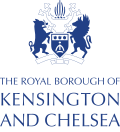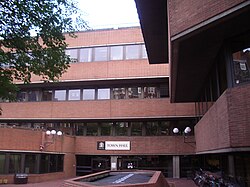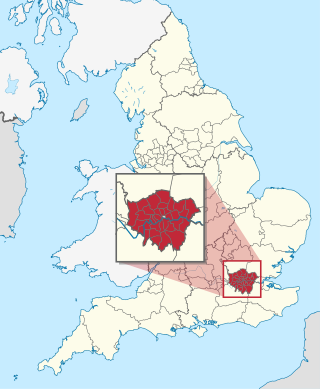
The London boroughs are the 32 local authority districts that together with the City of London make up the administrative area of Greater London, England; each is governed by a London borough council. The present London boroughs were all created at the same time as Greater London on 1 April 1965 by the London Government Act 1963 and are a type of local government district. Twelve were designated as Inner London boroughs and twenty as Outer London boroughs. The City of London, the historic centre, is a separate ceremonial county and sui generis local government district that functions quite differently from a London borough. However, the two counties together comprise the administrative area of Greater London as well as the London Region, all of which is also governed by the Greater London Authority, under the Mayor of London.

The Royal Borough of Kensington and Chelsea is an Inner London borough with royal status. It is the smallest borough in London and the second smallest district in England; it is one of the most densely populated administrative regions in the United Kingdom. It includes affluent areas such as Notting Hill, Kensington, South Kensington, Chelsea, and Knightsbridge.
The Royal Borough of Kensington and Chelsea Parks Police is a body of constables responsible for policing the parks and open spaces of the London Borough of Kensington and Chelsea. In 2013, it was merged with the Hammersmith and Fulham Parks Constabulary to form the Parks Police Service. Then, in July 2019 The Royal Borough of Kensington and Chelsea Parks Police moved away from The London Borough of Hammersmith and Fulham Parks Constabulary, once again becoming a single service.
Nicholas Hall Freeman, OBE (1985) was the Conservative Party leader of the London Royal Borough of Kensington and Chelsea Council in the United Kingdom from 1977 until 1989; he was also its mayor in 1988.

Hackney London Borough Council, also known as Hackney Council, is the local authority for the London Borough of Hackney, in Greater London, England. It is a London borough council, one of 32 in London. The council has been under Labour majority control since 2002. Since 2002 the council has been led by a directly elected mayor. The council meets at Hackney Town Hall and has its main offices in the adjoining Hackney Service Centre.

Newham London Borough Council also known as Newham Council, is the local authority for the London Borough of Newham in Greater London, England. It is a London borough council, one of 32 in London. The council has been under Labour majority control since 1971. It has been led by a directly elected mayor since 2002. The council meets at Newham Town Hall in East Ham and has its main offices at 1000 Dockside Road, overlooking the Royal Albert Dock.

Waltham Forest London Borough Council, also known as Waltham Forest Council, is the local authority for the London Borough of Waltham Forest in London, England. It is a London borough council, one of 32 in London. The council has been under Labour majority control since 2010. The council is based at Waltham Forest Town Hall in Walthamstow.
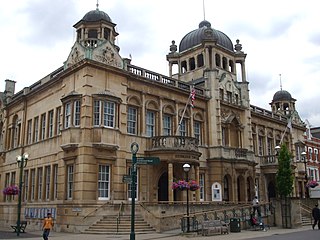
Redbridge London Borough Council, also known as Redbridge Council, is the local authority for the London Borough of Redbridge in Greater London, England. It is a London borough council, one of 32 in London. The council has been under Labour majority control since 2014. The council meets at Redbridge Town Hall in Ilford and has its main offices nearby at Lynton House.

Islington London Borough Council, also known as Islington Council, is the local authority for the London Borough of Islington in Greater London, England. It is a London borough council, one of 32 in London. The council has been under Labour majority control since 2010. The council meets at Islington Town Hall.

Barking and Dagenham London Borough Council, also known as Barking and Dagenham Council, is the local authority for the London Borough of Barking and Dagenham in Greater London, England. It is a London borough council, one of 32 in the United Kingdom capital of London. It provides a broad range of local government services including Council Tax billing, libraries, social services, processing planning applications, waste collection and disposal, and it is a local education authority. The council has been under Labour majority control since its creation in 1965. The council was created by the London Government Act 1963 as the Barking London Borough Council and replaced two local authorities: Barking Borough Council and Dagenham Borough Council. The council was renamed on 1 January 1980. It is based at Barking Town Hall in the centre of Barking.

Tower Hamlets London Borough Council, also known as Tower Hamlets Council, is the local authority for the London Borough of Tower Hamlets in Greater London, England. It is a London borough council, one of 32 in London. The council has been under the majority control of local party Aspire since 2022. It has been led by a directly elected mayor since 2010. The council is based at Tower Hamlets Town Hall on Whitechapel Road.

Lewisham London Borough Council, also known as Lewisham Council, is the local authority for the London Borough of Lewisham in Greater London, England. It is a London borough council, one of 32 in London. The council has been under Labour majority control since 2010. It has been led by a directly elected mayor since 2002. The council meets at Lewisham Town Hall in the Catford area of the borough.

Barnet London Borough Council, also known as Barnet Council, is the local authority for the London Borough of Barnet in Greater London, England. It is a London borough council, one of 32 in London. The council has been under Labour majority control since 2022. The council meets at Hendon Town Hall and has its main offices at 2 Bristol Avenue in Colindale.
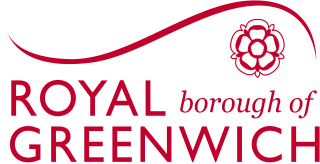
Greenwich London Borough Council, also known as Greenwich Council or the Council of the Royal Borough of Greenwich, is the local authority for the Royal Borough of Greenwich in Greater London, England. It is a London borough council, one of 32 in London. The council has been under Labour majority control since 1971. It meets at Woolwich Town Hall and has its main offices at the Woolwich Centre opposite.
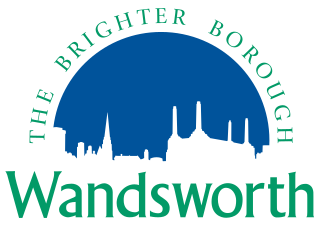
Wandsworth London Borough Council, also known as Wandsworth Council, is the local authority for the London Borough of Wandsworth in Greater London, England. It is a London borough council, one of 32 in London. The council has been under Labour majority control since 2022. It is based at Wandsworth Town Hall in the centre of Wandsworth.

Ealing London Borough Council, which styles itself Ealing Council, is the local authority for the London Borough of Ealing in Greater London, England. It is a London borough council, one of 32 in London. The council has been under Labour majority control since 2010. The council meets at Ealing Town Hall and has its main offices in the adjoining Perceval House.
Emma Dent Coad is a British architectural historian and politician who served as Member of Parliament (MP) for Kensington from 2017 to 2019. A former member of the Labour Party, she has been a member of Kensington and Chelsea London Borough Council since 2006. She resigned her Labour membership on 27 April 2023, but remains on the local council as an independent.
Nicholas Paget-Brown is an English Conservative politician who was leader of the Kensington and Chelsea London Borough Council. He was first elected as a councillor for Hans Town on 8 May 1986. He became leader of the council on 23 May 2013. On 30 June 2017, he announced that he would step down as leader due to the council's response to the Grenfell Tower fire, and was replaced as leader by Conservative Elizabeth Campbell on 19 July 2017.

The 2018 Kensington and Chelsea London Borough Council election took place on 3 May 2018 to elect members of Kensington and Chelsea London Borough Council in England. The election was held on the same day as other local elections in England. While Kensington and Chelsea is usually regarded as a Conservative stronghold, there was media speculation that Labour could win control of the council in the wake of the Grenfell Tower fire. However the Conservatives maintained control, losing just one Councillor, in St. Helen's Ward, winning 36 seats to Labour's 13.

The 2022 Kensington and Chelsea London Borough Council election was held on 5 May 2022. All 50 members of Kensington and Chelsea London Borough Council were elected. The elections took place alongside local elections in the other London boroughs and elections to local authorities across the United Kingdom.

